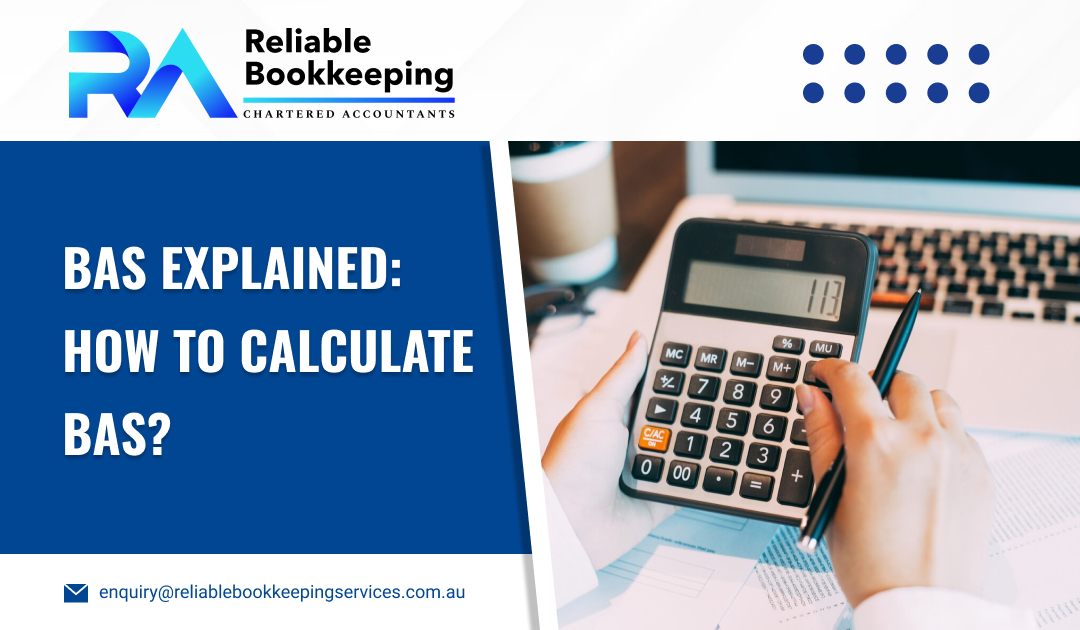Managing BAS is crucial for any business and it is an indispensable aspect of bookkeeping for small businesses. However, it might be difficult to understand BAS if you are not familiar with the preparation and lodgment of BAS or if you are new to running a business. In this blog, we’ll provide detailed information on BAS statements, calculations, and lodgment.
What Does BAS Stand for?
The BAS stands for business activity statement (BAS), which is a tax report you lodge to the Australian Taxation Office (ATO) monthly, quarterly, or yearly. Businesses need to complete the BAS to report and pay GST and all other business taxes. Every Australian business registered for GST has to file the form at the ATO.
Managing Business Activity Statement can help companies monitor their finances: monitoring their income and expenses will help them calculate GST and other BAS liabilities. A BAS form is useful in your reporting and paying your:
- Goods & Services Tax (GST)
- Pay-As-You-Go (PAYG) Income Tax Instalments
- PAYG Withholding Taxation
- Fringe Benefits Tax (FBT) Instalments
- Fuel Tax Credits
- Wine Equalisation Tax (WET)
- Luxury Car Tax (LCT)
How is BAS Calculated?
Follow the steps given below to calculate BAS:
- Select a Method to Complete Your BAS
You need to choose a method to complete your BAS. You can choose between a worksheet method and an accounts method. Based on the method you choose, you might not need to complete all of the GST labels.
- Address GST-Applicable Sales and Purchases
List all your sales and purchases liable to GST and keep all the invoices, records and receipts related to these transactions. For each sale, it is crucial to note the sale price without GST. The same thing applies to each purchase. It will make it easy to calculate GST in the next step. Some items may be GST-free. A registered BAS agent or Melbourne bookkeeper will ensure that transactions, where GST applies, are included.
- Calculate Collected and Paid GST, Plus Net GST
The BAS agent will help you calculate collected and paid GST. You need to report your net GST to the Australian Taxation Office (ATO). To report net GST, make sure to include it in your BAS. After submitting, you will either pay the net GST owed or receive a refund, based on your calculations.
- Keep Accurate Records
Maintaining detailed GST records is crucial to staying compliant with ATO rules and claiming any GST credits you are liable for. Now, you know the answer to the question ‘how to calculate BAS’.
What are BAS Mistakes or Adjustments?
Making corrections in the mistake in the Business Activity Statements is different from making an adjustment:
- A mistake or error relates to an amount that was not correct at the time of lodgment.
- An adjustment relates to a recorded purchase or sale that was accurate when BAS was lodged, but something occurred later that changed that amount.
When to Fix a Mistake?
The following are a few examples of mistakes that you may have made in previously lodged BAS:
- transposition errors
- categorising a GST-free purchase or sale as taxable
- categorising taxable purchases or sales as GST-free
- counting purchases twice
When to Make an Adjustment?
If you know that you need to make an adjustment, you usually report it in the activity statement for your existing reporting time period. For example, you need to make adjustments if:
- the sale or purchase price changes
- products or goods are returned and the sale is cancelled.
How to Lodge BAS?
- Most businesses lodge their BAS online. Filing BAS online is a quick and easy way.
- The second option is that you can lodge through your tax or BAS agent. Many business owners receive support from small business tax accountants.
- The third option is lodging BAS by mail.
Conclusion
If you still have questions regarding the calculations of BAS, you can receive help from us. We are the leading Reliable Bookkeeping Services provider in Australia, so you can be sure that our expert bookkeepers will help you lodge your BAS on time.
Other Useful link:

